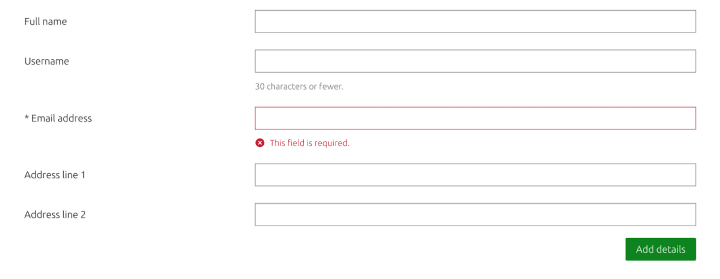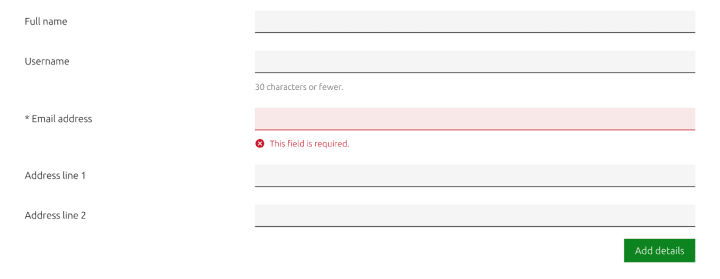Revisiting form elements in Vanilla Framework
Lyubomir Popov
on 12 December 2022
Over the years, we’ve identified a number of areas for improvement when it comes to the basic building blocks of a form – inputs, buttons, etc:
- Long-standing complaints that inputs and buttons are too similar and therefore hard to distinguish
- “Noisiness” of long forms caused by the presence of borders around all sides of inputs and buttons
Last cycle, our proposal for updated form elements was discussed and approved, and in this iteration, we worked on implementing it in Vanilla, our front-end framework.
Before Vanilla 3.9:

After Vanilla 3.9:

- We’ve reduced the number of borders (all around) to the minimum required to satisfy WCAG contrast ratio requirements for interactive elements
- We’ve removed round corners from buttons and other elements, as part of a wider push to align better with the work of our Brand team
- We’ve introduced subtle transitions when interacting with form elements
This update also affects components that build on the functionality of form elements, like our search and Filter component:

The updated style was released as part of Vanilla 3.9.0 release.
Version 3.9.0 has just been released. You can see the updated form elements in action here
Talk to us today
Interested in running Ubuntu in your organisation?
Newsletter signup
Related posts
From sales development to renewals: Mariam Tawakol’s career progression at Canonical
Career progression doesn’t follow a single path – and at Canonical, we embrace that. Our culture encourages individuals to explore roles aligned with their...
In pursuit of quality: UX for documentation authors
Canonical’s Platform Engineering team has been hard at work crafting documentation in Rockcraft and Charmcraft around native support for web app frameworks...
Canonical announces Charmed Feast: A production-grade feature store for your open source MLOps stack
July 10, 2025: Today, Canonical announced the release of Charmed Feast, an enterprise solution for feature management with seamless integration with Charmed...
